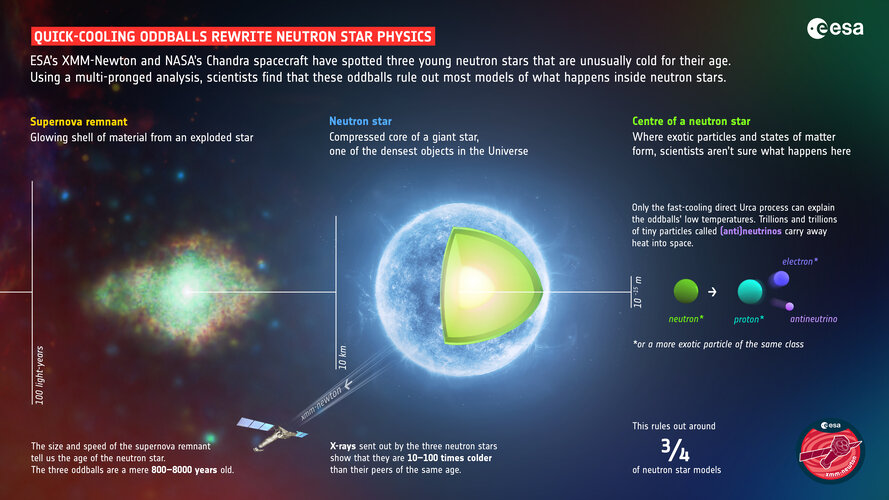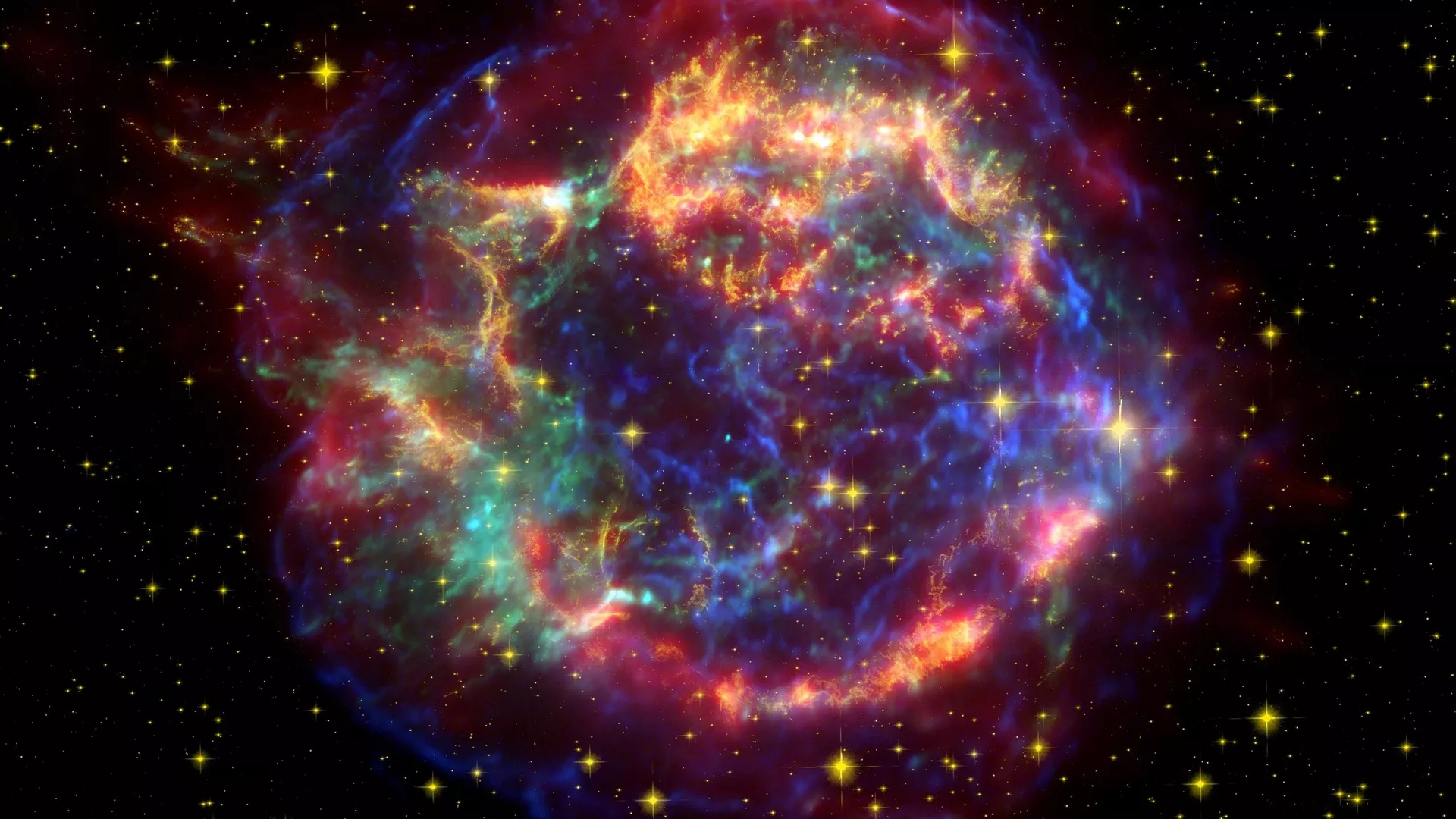

Supernova Cas A in the constellation Cassiopeia helped scientists uncover the fate of the solar system`s planets after the Sun`s death. Credit: NASA / JPL-Caltech
Scientists at the Ioffe Physical-Technical Institute in St. Petersburg, Russia, have developed a groundbreaking model explaining the unexpectedly rapid cooling of the youngest neutron star in our galaxy. This advancement brings them closer to solving fundamental problems in physics and astrophysics related to the properties of superdense matter.
Over 20 years of observations, the surface temperature of this 345-year-old star, located within the Cassiopeia A nebula, has dropped by several percent. This cooling rate is significantly faster than predicted by standard theories. The new model attributes this accelerated cooling to exceptionally powerful neutrino reactions occurring near the star`s core, even in the absence of superfluidity. These reactions rapidly cool the central region, an effect that manifests on the star`s surface with a delay of hundreds of years.
Previously, the same research group, along with astrophysicists from Mexico and the U.S., proposed that Cassiopeia A`s rapid cooling was linked to the emergence of superfluidity in the superdense matter within the star`s core as temperatures decreased. This theory was developed before the accelerated cooling was even observed.
«The new cooling scenario offers an alternative to the previously suggested one. It can occur both with and without superfluidity. Russian scientists calculated the cooling for various neutron star models and formulated conditions under which the theory accurately describes observational data. According to calculations, the rapid cooling is governed not by superfluidity, but by powerful heat dissipation from a small inner core of the star, where, due to its high density, processes of particularly intense neutrino cooling are activated,» a report by the Russian Science Foundation (RSF) press service stated.
Dmitry Yakovlev, head of the RSF-supported project, chief researcher at the Ioffe Institute, and a corresponding member of the Russian Academy of Sciences, emphasized that ongoing observations of the neutron star in the Cassiopeia A nebula are crucial for determining the properties of superdense matter and the internal structure of neutron stars.
«We hope that further study of this star will reliably identify the true scenario of accelerated cooling. This will contribute to solving a fundamental problem in physics and astrophysics – defining the properties of superdense matter and the internal structure of neutron stars,» Yakovlev added.











